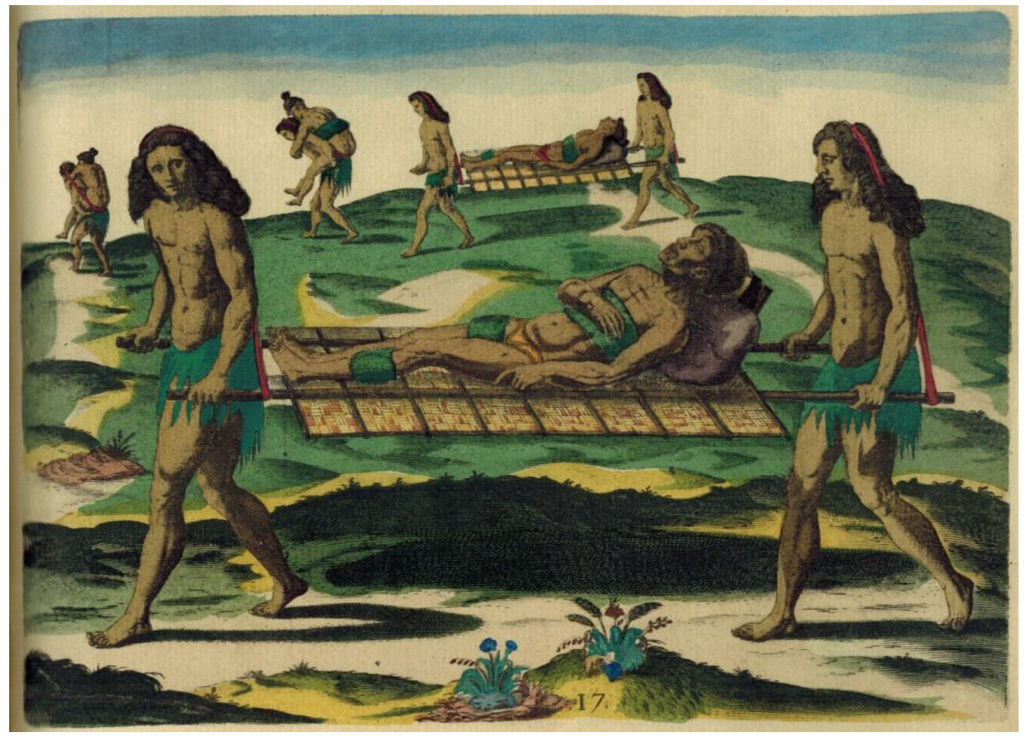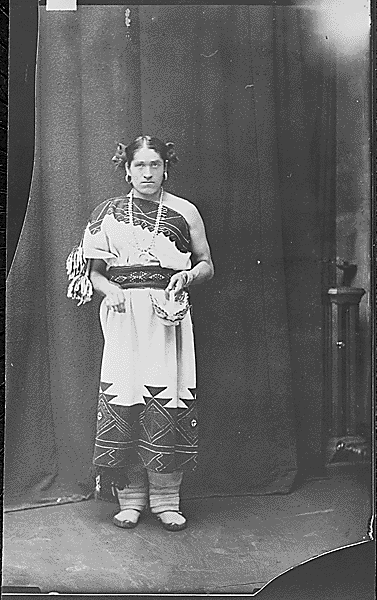44. Can We Just Title An Episode "Fuck Colonialism"?: Reclaiming Two-Spirit Histories
/For this episode, Leigh is joined by Sam Campbell to discuss the history behind Two Spirit identities. In this episode, they cover the pre-colonial significance of Two-Spirit people to Indigenous communities, how early colonists were able to shape the narrative of what it meant to be Two-Spirit and how that has changed, and last, how colonization has nearly eradicated Two-Spirit histories. How can we uplift these stories to highlight Two-Spirit resilience despite the genocide they faced?
Sam Campbell is a Diné and Yome Two-Spirit individual who has dedicated their time to supporting LGBT2s+ groups. As a board member and former drum keeper for the Bay Area American Indian Two-Spirits (BAAITS), they have helped facilitate community connection and healing. As a two-time TEDx speaker, Sam has worked to highlight the complexity of gender and sexuality as well as bring awareness to the Missing and Murdered Indigenous Women and Girls movement.
Locate Sam upon the internet:
@genderisauniverse on Instagram
@welcometothecosmos on TikTok
Sam has also given two TEDx Talks on Indigenous and Two-Spirit history and reclamation:
Firstly, let’s define what we mean by “Two-Spirit”— below is a fantastic video from them.us, featuring Geo Soctomah Neptune (Passamaquoddy), a Two-Spirit activist, model, basket maker, and politician, whom we mentioned in our episode:
Some Historical Images/Illustrations of Two-Spirits:
“Employments of the hermaphrodites”, watercolor by jacques le moyne and then engraving by theodore de bry, 1591. The image depicts Timucuan two-spirt people carrying wounded peopleand the dead on stretchers, showing their roles as caretakers, medicine people, and death workers.
“Dance to the berdash”, 1835-1837, by george catlin. depicting multiple men dancing around a two-spirit person among the sauk and fox
cheyenne he’emane’o in a ledger drawing depicting the victory dance held after Custer's defeat in 1876
Cheyenne hetaneman, 1889. An AFAB two-spirit person in battle, wearing a men’s breechcloth, depicted on a ledger drawing.
a unknown quechan kwe’rhame, c. 1890s — one of the only known photographs of an afab two-spirit person from this era, wearing a men’s breechcloth and bow guards on their wrists.
Some notable Two-Spirit individuals in the historic record, whom we’ll be covering in their own episodes!
Bíawacheeitchish, also kown as Woman Chief or “Pine Leaf”, a Crow warrior
Hosteen Klah (Diné: Hastiin Tłʼa), a Diné nádleehi artist and medicine person
Lozen (1840-1889), Chiricahua Apache warrior woman, prophet, and one of the most trusted member’s of geronimo’s band fighting against colonizers
Osh-Tisch (also spelled Ohchiish), a Crow badé
We’Wha (1849-1896), a Zuni lhamana, fibert artist, weaver, and potter who became a cultural ambassador for the Zuni people and indigenous americans in general
What happened to these histories: The Effects of Colonialism
As soon as European invaders arrived, the oppression of Native peoples in the Americas begun, and violence and anti-indigenous treatment generally went one of two ways — violence and genocide or assimilation.
One of the most infamous events of genocide and hatred against Indigenous Two-Spirit peoples was in 1513, when Spanish colonizer Vasco Nuñez de Balboa had forty two-spirit people that he encountered in Panama put to death by his dogs. The event was depicted in an engraving based on a painting published by Theodore de Bry.
One of the other ways settler colonialism enacted violence upon Indigenous peoples was to work through assimilation and erasure and restriction of their culture — namely through institutions called “residential schools” or “boarding schools”, though they are better described as assimilation camps.
The children in these institutions were subjected to countless types of abuse, from physical, sexual, emotional, to religious. They were given new Anglo-Saxon names, forced to wear western dress and their traditional clothing destroyed, forbidden from speaking their languages or practicing Indigenous customs, and their hair was cut.
Indigenous children at the Carlisle Indian School, an assimilation camp (“Residential/boarding school”), founded in 1879 with the goal of separating children from their families and “killing the indian to save the man”.
A Diné (Navajo Nation) student of carlisle Indian Boarding School in the 1880s, in a “before and after” sequence. The student file lists him as Tom Torlino— his Diné name was Hastiin To'Haali.
Two-Spirit Artists, Activists, and Influences to Follow Today:
Geo Soctomah Neptune (Passamaquoddy), she/they, is a master basket weaver, performer, and model. She became the first openly Two-Spirit person elected to public office in Maine during 2020!
Kairyn Potts (Nakota Sioux), he/him, is a Winkte Two-Spirit Indigenous youth advocate, comedian, and actor. He hosts a Snapchat video series on Indigenous youth culture with Marika Sila called Reclaim(ed). He also has some really hilarious comedy videos on his Instagram and TikTok you should definitely check out.
Anachnid (Oji-Cree/Mi’kmaq), she/her, is a Canadian electronic musician based in Montreal and won the Felix Award for Indigenous Artist of the Year at the 43rd Félix Awards in 2021. Her album, Dreamweaver, was released in February 2020
(Note: We mispronounced this artist’s name as Arachnid in the episode, our apologies!)
Bobby Sanchez (Quechua Wari), she/they, is a rapper, poet, and model. Check out her amazing track “Quechua 101 Land Back Please”:
Recommended reading for Two-Spirit poetry and literature:
Sovereign Erotics: A Collection of Two-Spirit Literature
BAAITS Two-Spirit Powwow 2023
The Bay Area American Indian Two Spirits Powwow is coming up on Saturday, February 4 in San Francisco! If you are local to the area, or even just want to check it out virtually via the livestream or some of the events they have going on in the week preceding the event, check it out at www.baaits.org!
If you want to learn more, check out our full list of sources and further reading below!
Online Articles & Resources:
"LGBTQIA+ Pride and Two-Spirit People" by Anya Montiel, Smithsonian Magazine.
"Appropriate Terms" by Alice B. Kehoe, Society for American Archaeology
"Turquoise Boy: Origins of the Two-Spirits" by Dancing Moccasins
"Two Spirits, Nádleeh, and LGBTQ2 Navajo Gaze" by Gabriel S. Estrada
Two-Spirit People: Sex, Gender & Sexuality in Historic and Contemporary Native America
Books and Print Articles:
Fulton, Robert, and Steven W. Anderson. “The Amerindian ‘Man-Woman’: Gender, Liminality, and Cultural Continuity.” Current Anthropology 33, no. 5 (1992): 603–10. http://www.jstor.org/stable/2743927.
Parsons, Elsie Clews. “The Zuñi Ła’mana.” American Anthropologist 18, no. 4 (1916): 521–28. http://www.jstor.org/stable/660121.
Smithers, Gregory D. “Cherokee ‘Two Spirits’: Gender, Ritual, and Spirituality in the Native South.” Early American Studies 12, no. 3 (2014): 626–51. http://www.jstor.org/stable/24474873.
Dozono, Tadashi. “Teaching Alternative and Indigenous Gender Systems in World History: A Queer Approach.” The History Teacher 50, no. 3 (2017): 425–47. http://www.jstor.org/stable/44507259.
Katz, Jonathan Ned. “Native Americans/Gay Americans 1528-1976”, Gay American History: Lesbians & Gay Men in the U.S.A.
Kit Heyam. “‘Because of the manifestation of Spirit’: Gender, spirituality and survival in North America and South Asia”, Before We Were Trans
Roscoe, Will. Changing Ones: Third & Fourth Genders in Native North America
Williams, Walter L. The Spirit and the Flesh: Sexual Diversity in American Indian Culture
Roscoe, Will (editor). Living the Spirit: A Gay American Indian Anthology

















